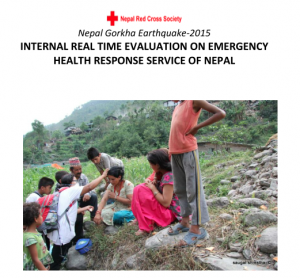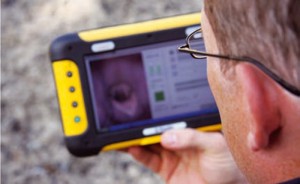While the distinction between formative and summative evaluation is often drawn too sharply, there is a real distinction. For formative evaluation to really be formative, there needs to be a steady flow of evaluative feedback that allows for corrections along the way… that is, to do what ever is being done better, both in the present and into the future.
Compare two approaches to formative evaluation ~ real time evaluation and digital portfolios of student learning.
Real Time Evaluation

http://reliefweb.int/report/nepal/nepal-gorkha-earthquake-2015-internal-real-time-evaluation-emergency-health-response
An evaluation approach that captures this is “real time evaluation,” an idea that appears often in humanitarian relief efforts. With a disastrous situation that demands rapid alleviation of suffering comes the need for quick information about whether that suffering is indeed being alleviated, and if it isn’t then what might be done in order to do so. RTE emphasizes timely evaluation feedback to strengthen program design and implementation, some common features are:
- RTE takes place during implementation
- is iterative
- short time-frame is short, days not weeks
- relies on secondary sources of information, but also field visits
- use internal ‘consultants’
- emphasis on process and immediate lesson-learning
- ‘quick and dirty’ results enable quick program changes
Digital Portfolios of Student Learning
While traditional report cards have long been the mainstay in reporting student learning technology that allows for ongoing feedback about what and how students are learning are now common. Digital portfolios are collections of evidence managed by users and shared electronically, often on the web but increasingly through other social media platforms. One example is Fresh Grade, an app that facilitates documenting and sharing learning activities and outcomes. Common features of digital portfolios are:
- user driven (usually students, but also increasingly teachers)
- shared digitally
- ongoing representation of learning
- includes direct evidence
- keyed to stated criteria and standards
- modifiable as an end product, summative evaluation
What can we learn from these examples?
RTE is often done under difficult circumstances with limited ability to collect data first hand and thus is content with ‘quick and dirty’ results. Disaster situations make it onerous to be in the field and evaluation relies on reports from the field (observations of aid workers, sector staff in the area, and so on). On the other hand, classrooms and other educational settings are easy to access, but the data about learning activities and outcomes are similar to reports from the field. Digital portfolios and especially the real time apps (like Fresh Grade) provide immediate evidence of what is going on and what is being accomplished. Apps allow students and teachers to create and share information on an ongoing basis, but permit editing and adding to the record over time. If we think about an individual student’s learning as a model for a program, perhaps this technology has something to offer formative program evaluation.
RTE could use an app or web based platform (most are available for smart phones and tablets, and there are a number of web-based tools that might serve this purpose: Evernote, Google drive, Three Ring) so those on the ground could provide data about what is happening by sending photographs, interviews, observations, documents, and so on to evaluators who are unable to collect data firsthand. Connectivity may be an issue in some situations, but even erratic connection would allow for varied and compelling data to be shared. In non-emergency situations this wouldn’t be a problem. Technology that allows for sharing information easily and often may increase the likelihood adjustments can be made and thus the purpose of formative evaluation realized.
 Follow
Follow
